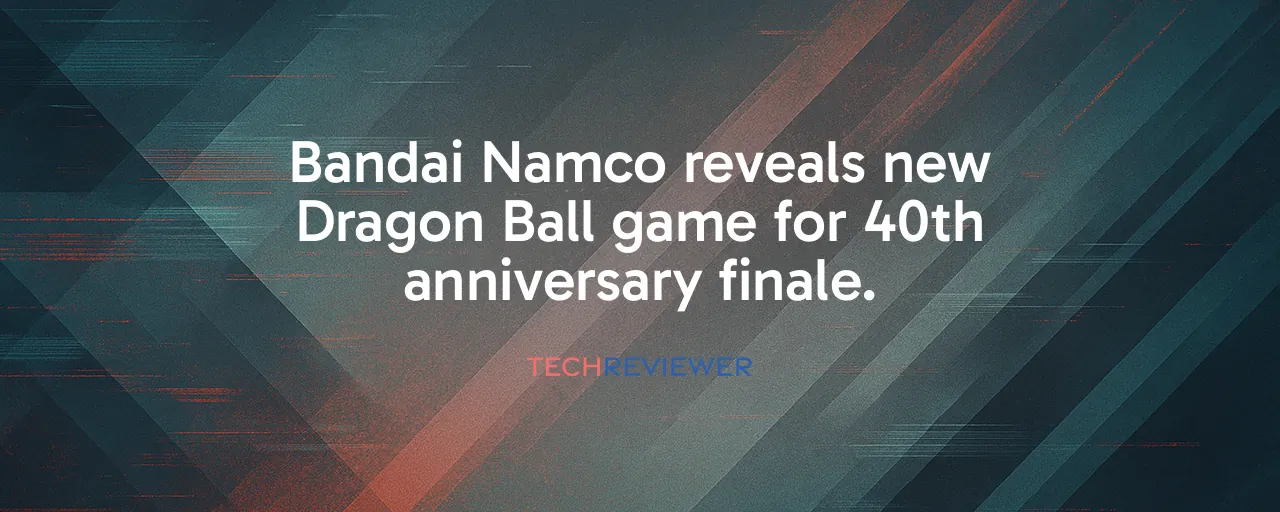A Milestone Moment for Dragon Ball
Dragon Ball's gaming empire is about to get bigger. Bandai Namco announced that a new game will be revealed on January 25, 2026, at the Genkidamatsuri event in Chiba, Japan, marking the end of the franchise's 40th anniversary celebration. This news lands as Dragon Ball basks in a record-breaking year, with 190.6 billion yen in revenue for 2025, making it the company's top-performing intellectual property ever. What makes this moment stand out? It's the sixth major game title in active development or recent release, a sign of the franchise's unrelenting momentum.
The announcement, shared via the official Dragon Ball Games social media account, promises a showcase of fresh content alongside the new title. With Masako Nozawa, the iconic voice of Goku, set to appear at the event, fans are already buzzing about what's next. The timing couldn't be better, coming off the heels of Dragon Ball Sparking Zero's blockbuster launch in October 2024, which sold 5 million copies in just four months, setting a franchise record for the fastest-selling console game.
Reviving a Legend: Sparking Zero's Triumph
To understand the excitement around the new game, look at Dragon Ball Sparking Zero. Launched in 2024, it revived the Budokai Tenkaichi series after a 17-year hiatus, delivering a visual and technical leap with Unreal Engine 5. Its 180-character roster, complete with dynamic hair physics and destructible environments, captured the anime's explosive energy. The game's DP Battle system, which balances team-building with character power levels, addressed long-standing fan concerns about competitive play, while cinematic camera angles brought iconic anime moments to life.
Sparking Zero's success wasn't just about nostalgia. Post-launch updates, like the June 2025 patch that overhauled damage calculations, showed Spike Chunsoft's commitment to refining gameplay. The game hit 122,500 concurrent players on Steam, outpacing rivals like Tekken 8 and Street Fighter 6. Its 3 million sales in the first 24 hours, timed with the Dragon Ball Daima anime premiere, proved the power of synchronized multimedia releases. This case study highlights a key lesson: blending fan-favorite elements with modern tech can reignite dormant series for massive commercial wins.
FighterZ: A Blueprint for Competitive Glory
Contrast Sparking Zero with Dragon Ball FighterZ, a 2018 title that carved a different path. Developed by Arc System Works, FighterZ prioritized competitive balance, earning a lasting spot in EVO tournaments and the fighting game community. Its 2.5D visuals and tight mechanics appealed to esports players, with over 10 million lifetime sales by 2025. Unlike Sparking Zero's focus on anime spectacle, FighterZ showed how Dragon Ball could compete with traditional fighting games by emphasizing skill over flash.
The lesson here is clear. FighterZ succeeded by tailoring its design to a specific audience, proving anime games can hold their own in competitive circles. However, its esports focus limited its appeal to casual players, unlike Sparking Zero's broader approach. Bandai Namco's ability to support both styles shows strategic flexibility, balancing niche and mainstream audiences. The new 2026 title will likely draw from both, aiming to capture casual fans while offering depth for dedicated players.
Challenges on the Horizon
Despite the franchise's highs, hurdles remain. Fighting games like Sparking Zero face steep learning curves that can alienate casual players, even with simplified controls. The $70 price tag for premium titles also sparks hesitation among younger fans, a core demographic. Add to that the perception of fragmented content, with season passes and DLC like Sparking Zero's Daima Character Pack 2 raising concerns about incomplete base games. Some players wait for discounted complete editions, delaying revenue.
Technical issues add another layer. Sparking Zero's frame rate dips on base PlayStation 5 units and online connectivity woes frustrated players, despite rollback netcode improvements. The free-to-play MOBA, Dragon Ball Gekishin Squadra, launched in September 2025, struggles in a crowded market dominated by League of Legends. These challenges highlight a delicate balance: delivering cutting-edge experiences while ensuring accessibility and stability across diverse platforms.
What's Next for Dragon Ball's Gaming Empire
The 2026 game reveal arrives at a pivotal moment. With six active titles, including Xenoverse 2, Kakarot, FighterZ, and Gekishin Squadra, Bandai Namco is pushing boundaries. The franchise's mobile games, like Dragon Ball Legends and Dokkan Battle, continue generating steady revenue through gacha mechanics, though regulatory scrutiny over these systems looms in Europe and Asia. The new title could explore fresh genres, perhaps a next-gen mobile game or a Dragon Ball Super-focused fighter, building on Gekishin Squadra's cross-platform experiment.
What's fascinating is how Dragon Ball sustains its multigenerational appeal. Fans who grew up with the original manga now play alongside younger audiences drawn by streaming platforms. The 2026 reveal must balance this legacy with innovation, avoiding oversaturation. With no new anime officially confirmed beyond Daima, though speculation persists about a potential Dragon Ball Super return in 2026, the game's success may hinge on standalone appeal. Bandai Namco's track record suggests they'll lean on data-driven updates and community feedback, ensuring the franchise remains a cultural juggernaut.
